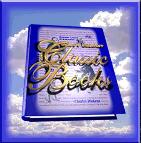World's Greatest Classic Books Feature:
D. H. Lawrence
Featured works:
All
Books Written By
D. H. Lawrence
BOOK LINKS
abebooks.co.uk.
A&E Shop
All-Ink.com
AlphaCraze.com
Amazon.ca
Amazon.com
Amazon.co.uk
BookCloseOuts.com
Booksamillion.com
Chapters.ca
eCampus.com
MUSIC LINKS
Music123
OldGlory.com
PlayCentric
PosterNow
PushPosters
Tower Records
Died: March 2, 1930, in Vence, near Antibes, France
David Herbert Lawrence was an English poet, novelist, short-story writer, and essayist. He is considered both the most influential and the most controversial literary persona of this century. His works are sexually explicit and psychologically challenging.
He was the fourth child of parents with distinctly disparate social status: a coal miner and a schoolteacher. In 1908, he graduated from University College, Nottingham. He taught at the Davidson Road School. Lawrence's first poems were published in the English Review in 1909. Two years later, his first novel, The White Peacock, was published.
In 1912, Lawrence ran off to Italy with Frieda Weekley, the wife of one of his professors and also the sister of the German aviator Freiherr Manfred von Richthofen. Two years later, after Frieda's divorce was final, they married in England.
Lawrence's personal life was often reflected in his writings. His works often dealt with the effects of social status as a result of his parents' relationship. In 1913, he published Sons and Lovers, an autobiographical story that is set in a mining town. In 1915 and 1921, he published The Rainbow and Women in Love, respectively. These works have been thought to recount his unsettled marriage and include detailed explorations of sexual and psychological relationships.
Lawrence strongly opposed World War I. He felt persecuted in England because of his marriage to a German woman. About this time, he developed tuberculosis and began searching for a climate in which he could comfortably live. His travel is described in many books written between 1920 and 1926.
Lawrence settled in Italy in 1926 where his health deteriorated. During this time, he worked on many revisions of Lady Chatterley's Lover, a novel that returns to the theme of relationships between people of disparate social classes. The first version was published in 1928, followed by a censored version in 1932. The most explicit version was not available publicly in the United States until 1959.

The Complete Short Stories
English novelist, shortstory writer,
poet, and essayist. He is best known for his often misunderstood theories about sexual
relations. Lawrence was as frequently criticized as a pornographer as he was lauded as a
prophet of a new literary freedom.

